Abstract
The biodegradation, photolysis, and adsorption of pentachlorophenol (PCP) in outdoor, aquatic environments were examined with man-made channels built by the U.S. Environmental Protection Agency at a field station on the Mississippi River near Monticello, Minn. Four channels were used, each channel being approximately 520 m long and receiving river water that flowed through the channels for about 10 h before reentering the river. The channels were dosed continuously during the summer of 1982 with various concentrations of PCP (approximately 0, 48, 144, and 432 micrograms/liter). We monitored the biotic and abiotic degradation of PCP in these channels for approximately 16 weeks. Photolysis of PCP was rapid at the water surface, but greatly attenuated with depth. Depending on sunlight conditions, photolysis accounted for a 5 to 28% decline in initial PCP concentration. Adsorption of PCP by sediment and uptake by biota accounted for less than 15% and probably less than 5% in unacclimated water. Microbial degradation of PCP became significant about 3 weeks after the initiation of dosing and eventually became the primary mechanism of PCP removal, accounting for a 26 to 46% (dose-dependent) decline in initial PCP. Most of the PCP-mineralizing microorganisms that developed in the channels were either attached to surfaces (e.g., rocks and macrophytes) or associated with surface sediments. Total bacterial numbers (direct microscopic counts) in the various channels were not affected significantly by PCP concentrations of micrograms per liter. Numerous strains of bacteria able to grow at the expense of PCP were isolated from the adapted channels. The experiments reported here will help predict the responses of flowing aquatic ecosystems to contamination by biocides such as pentachlorophenol.
Full text
PDF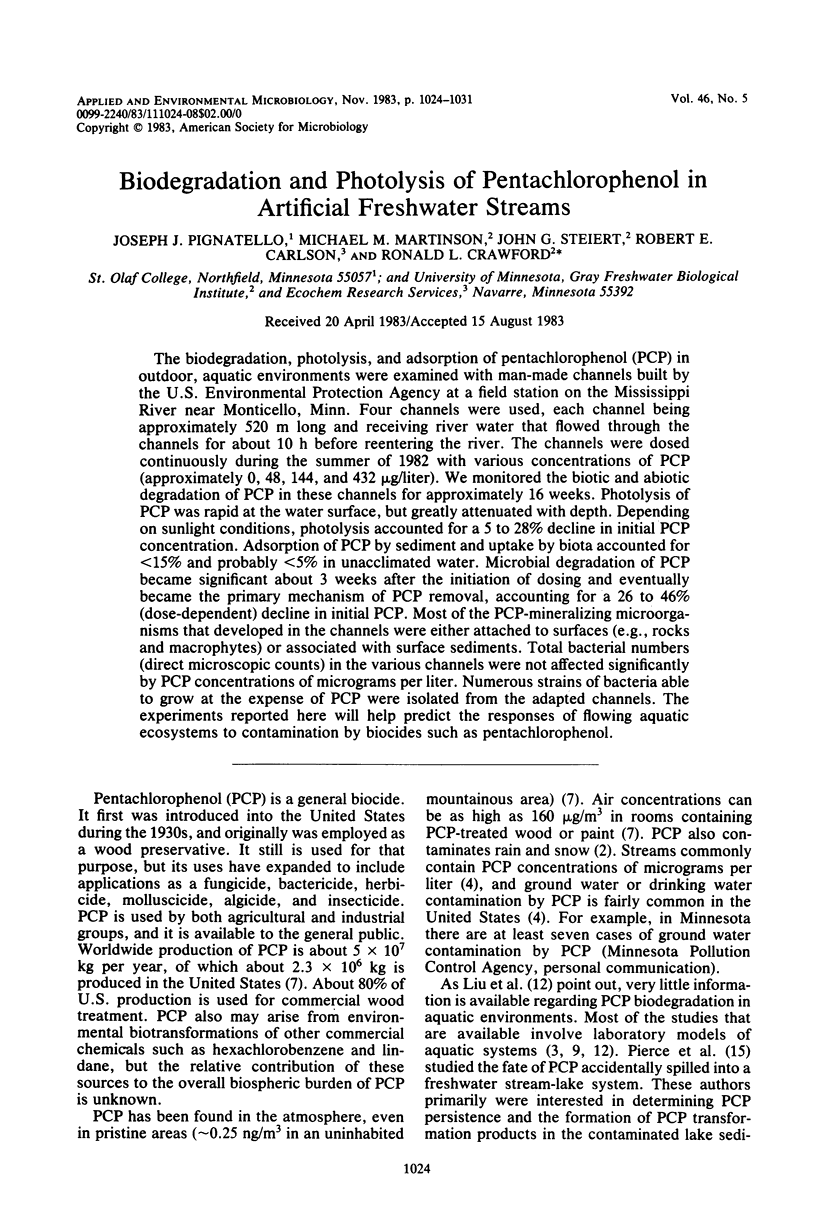
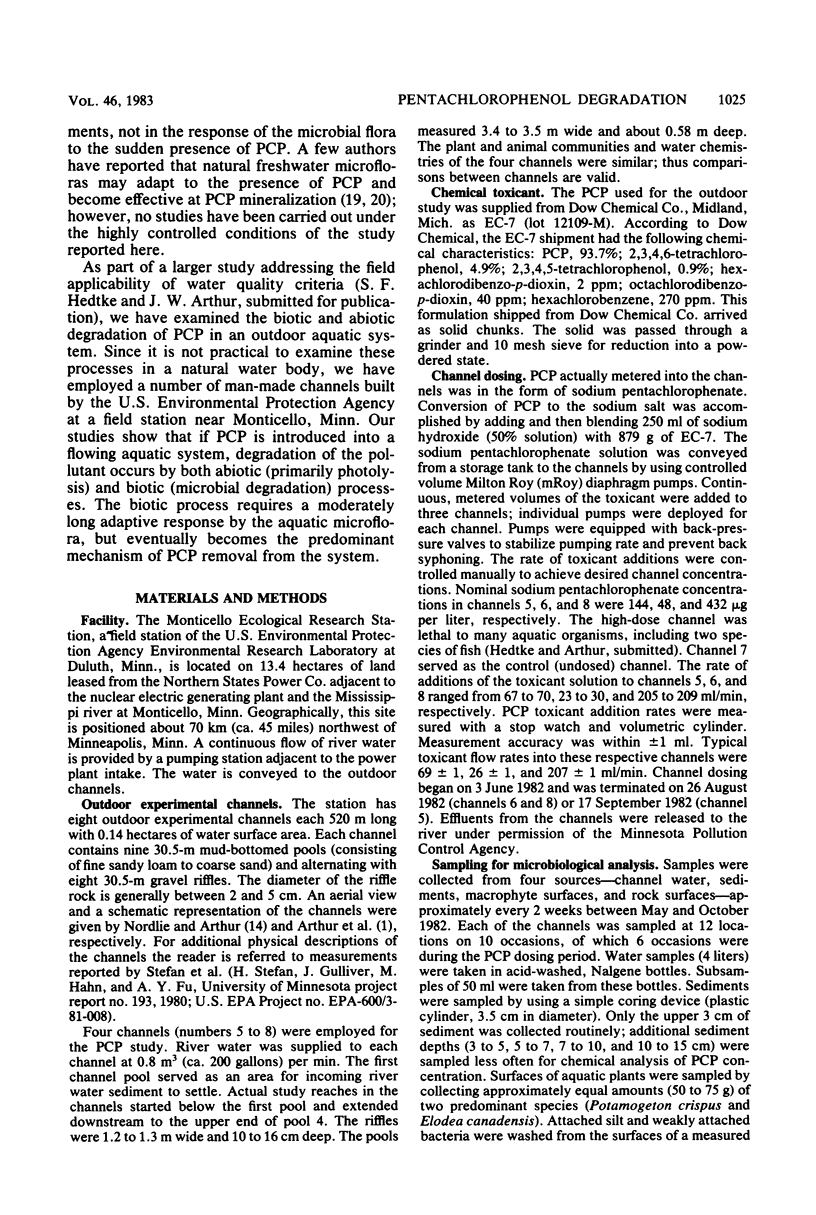
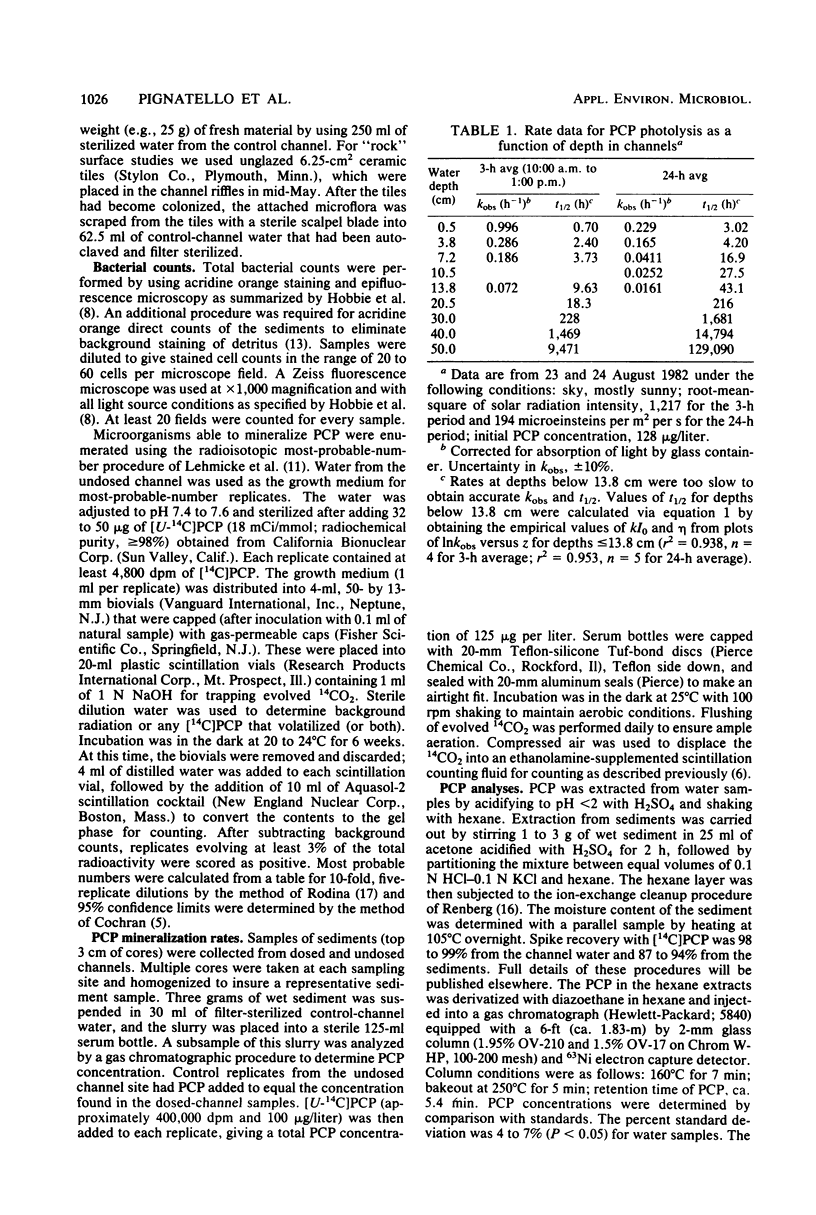
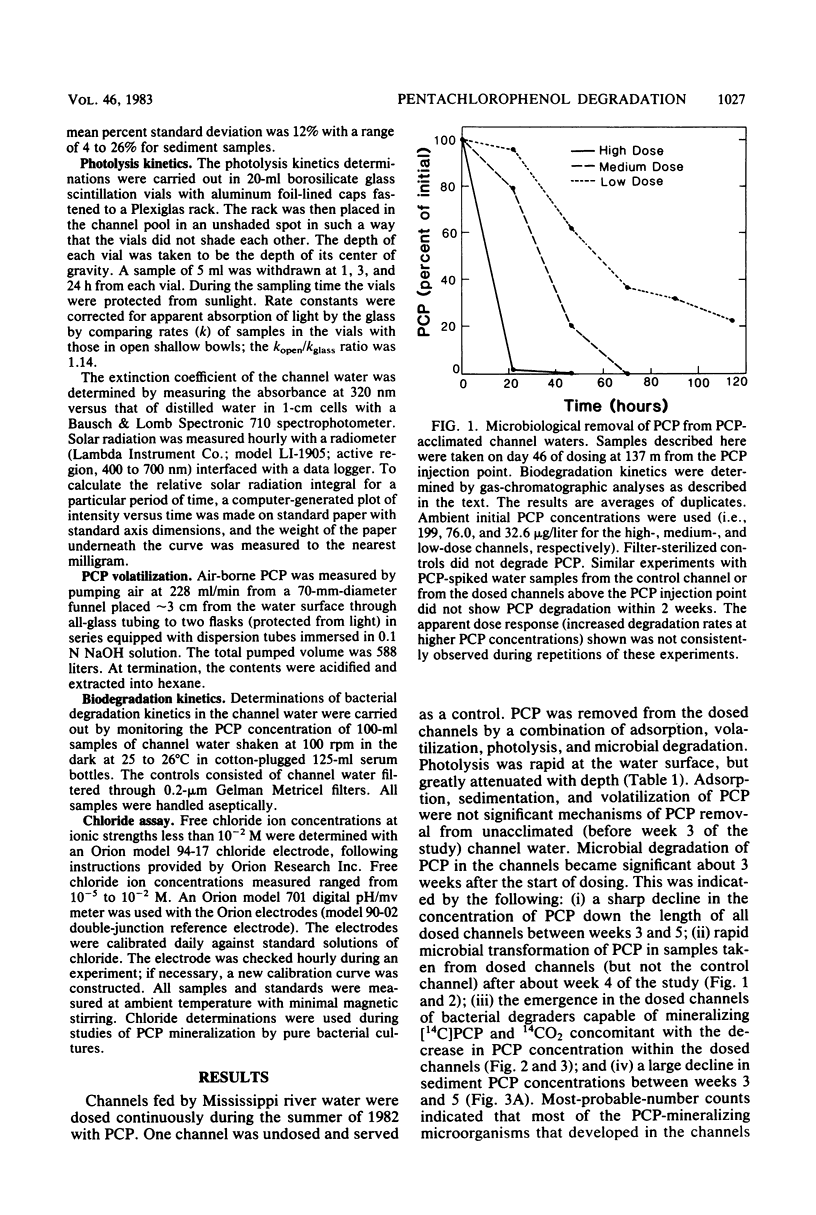
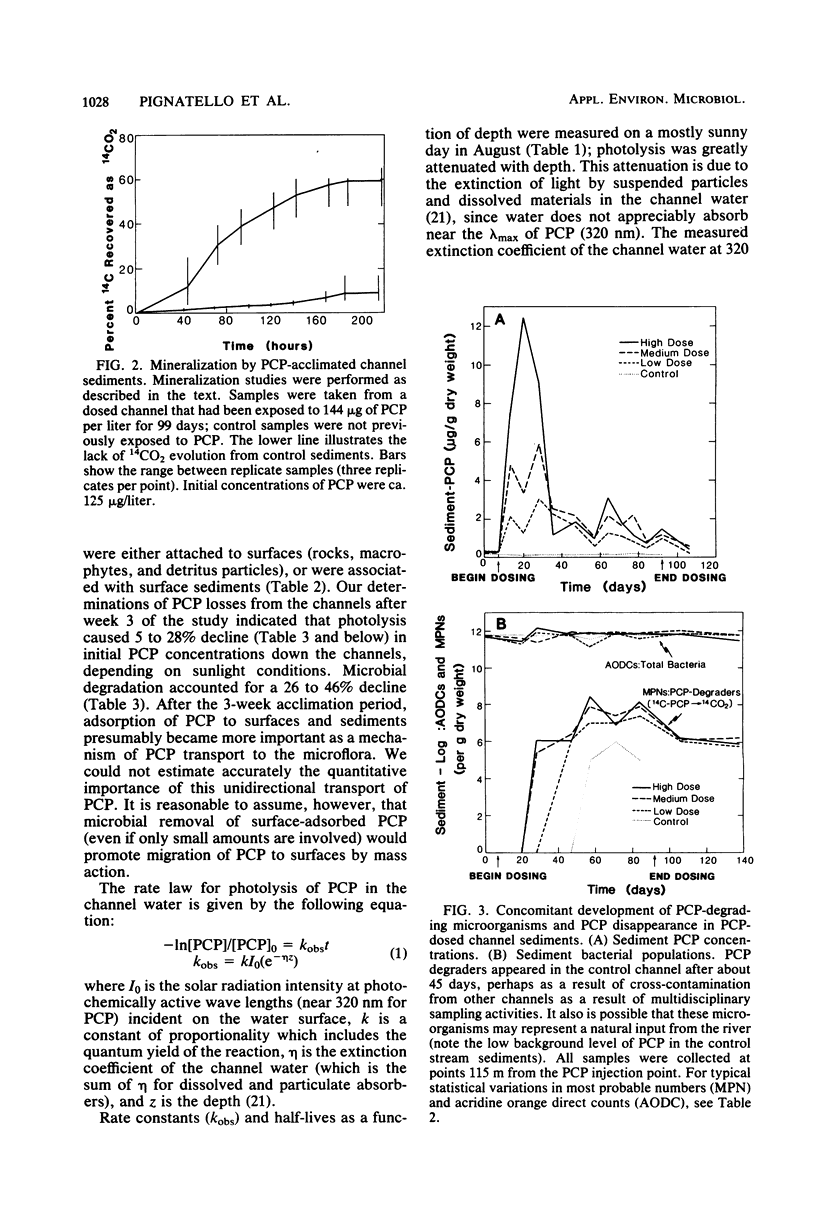
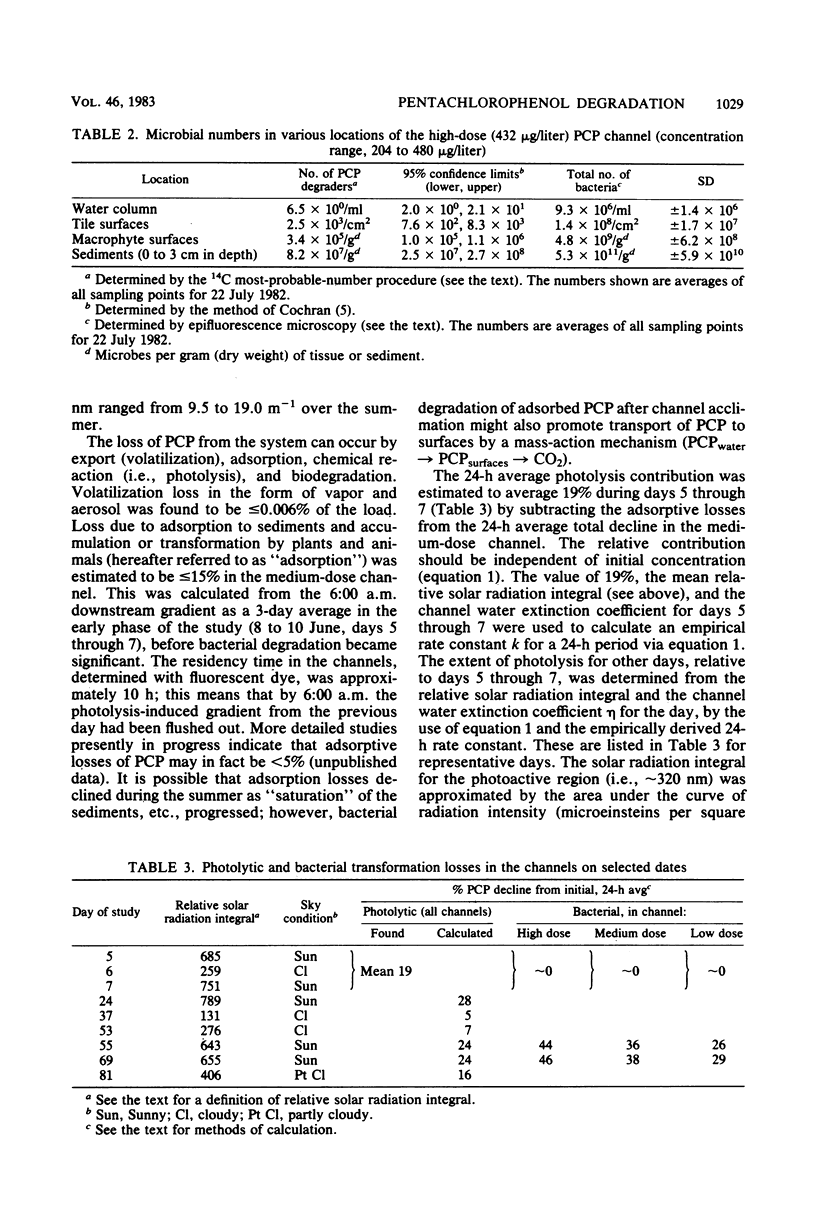
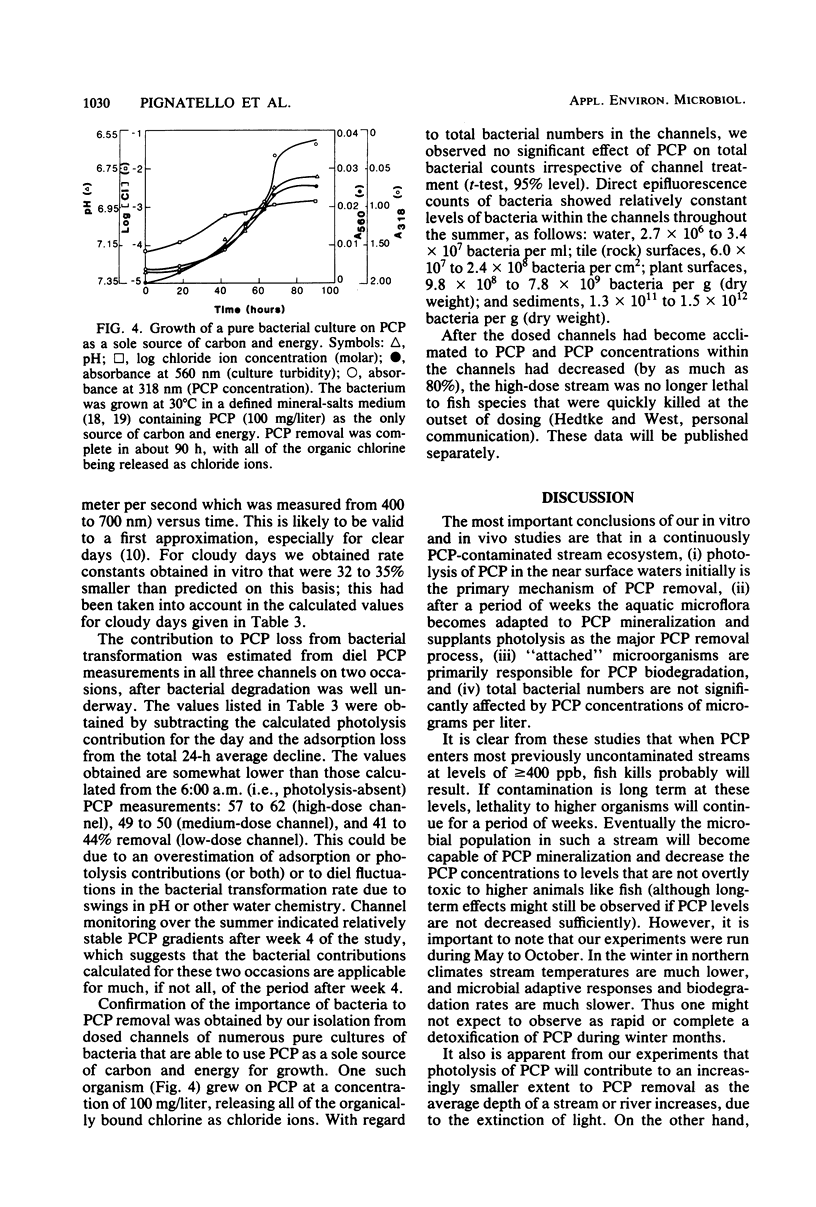
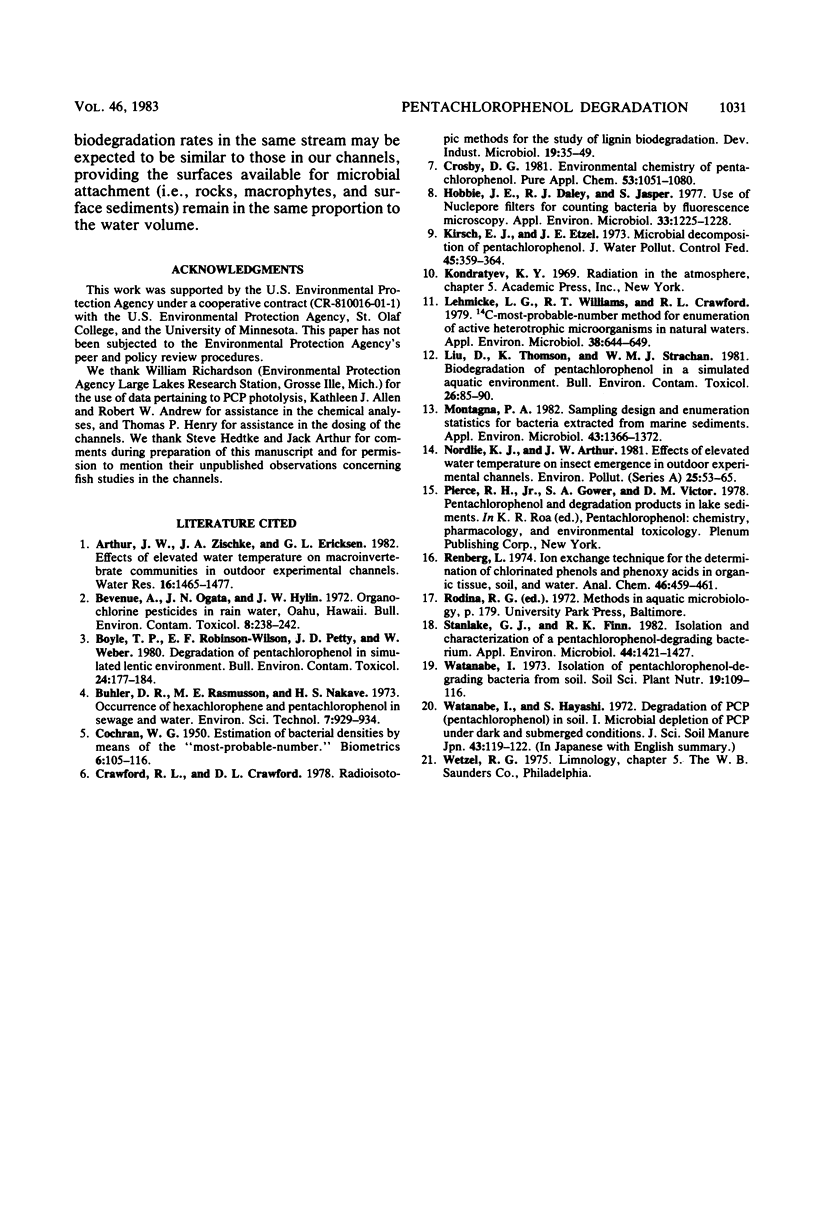
Selected References
These references are in PubMed. This may not be the complete list of references from this article.
- Bevenue A., Ogata J. N., Hylin J. W. Organochlorine pesticides in rainwater, Oahu, Hawaii, 1971-1972. Bull Environ Contam Toxicol. 1972 Oct;8(4):238–241. doi: 10.1007/BF01839519. [DOI] [PubMed] [Google Scholar]
- Boyle T. P., Robinson-Wilson E. F., Petty J. D., Weber W. Degradation of pentachlorophenol in simulated lentic environments. Bull Environ Contam Toxicol. 1980 Feb;24(2):177–184. doi: 10.1007/BF01608094. [DOI] [PubMed] [Google Scholar]
- COCHRAN W. G. Estimation of bacterial densities by means of the "most probable number". Biometrics. 1950 Jun;6(2):105–116. [PubMed] [Google Scholar]
- Hobbie J. E., Daley R. J., Jasper S. Use of nuclepore filters for counting bacteria by fluorescence microscopy. Appl Environ Microbiol. 1977 May;33(5):1225–1228. doi: 10.1128/aem.33.5.1225-1228.1977. [DOI] [PMC free article] [PubMed] [Google Scholar]
- Kirsch E. J., Etzel J. E. Microbial decomposition of pentachlorophenol. J Water Pollut Control Fed. 1973 Feb;45(2):359–364. [PubMed] [Google Scholar]
- Lehmicke L. G., Williams R. T., Crawford R. L. 14C-most-probable-number method for enumeration of active heterotrophic microorganisms in natural waters. Appl Environ Microbiol. 1979 Oct;38(4):644–649. doi: 10.1128/aem.38.4.644-649.1979. [DOI] [PMC free article] [PubMed] [Google Scholar]
- Liu D., Thomson K., Strachan W. M. Biodegradation of pentachlorophenol in a simulated aquatic environment. Bull Environ Contam Toxicol. 1981 Jan;26(1):85–90. doi: 10.1007/BF01622059. [DOI] [PubMed] [Google Scholar]
- Montagna P. A. Sampling design and enumeration statistics for bacteria extracted from marine sediments. Appl Environ Microbiol. 1982 Jun;43(6):1366–1372. doi: 10.1128/aem.43.6.1366-1372.1982. [DOI] [PMC free article] [PubMed] [Google Scholar]
- Renberg L. Ion exchange technique for the determination of chlorinated phenols and phenoxy acids in organic tissue, soil, and water. Anal Chem. 1974 Mar;46(3):459–461. doi: 10.1021/ac60339a030. [DOI] [PubMed] [Google Scholar]
- Stanlake G. J., Finn R. K. Isolation and characterization of a pentachlorophenol-degrading bacterium. Appl Environ Microbiol. 1982 Dec;44(6):1421–1427. doi: 10.1128/aem.44.6.1421-1427.1982. [DOI] [PMC free article] [PubMed] [Google Scholar]


